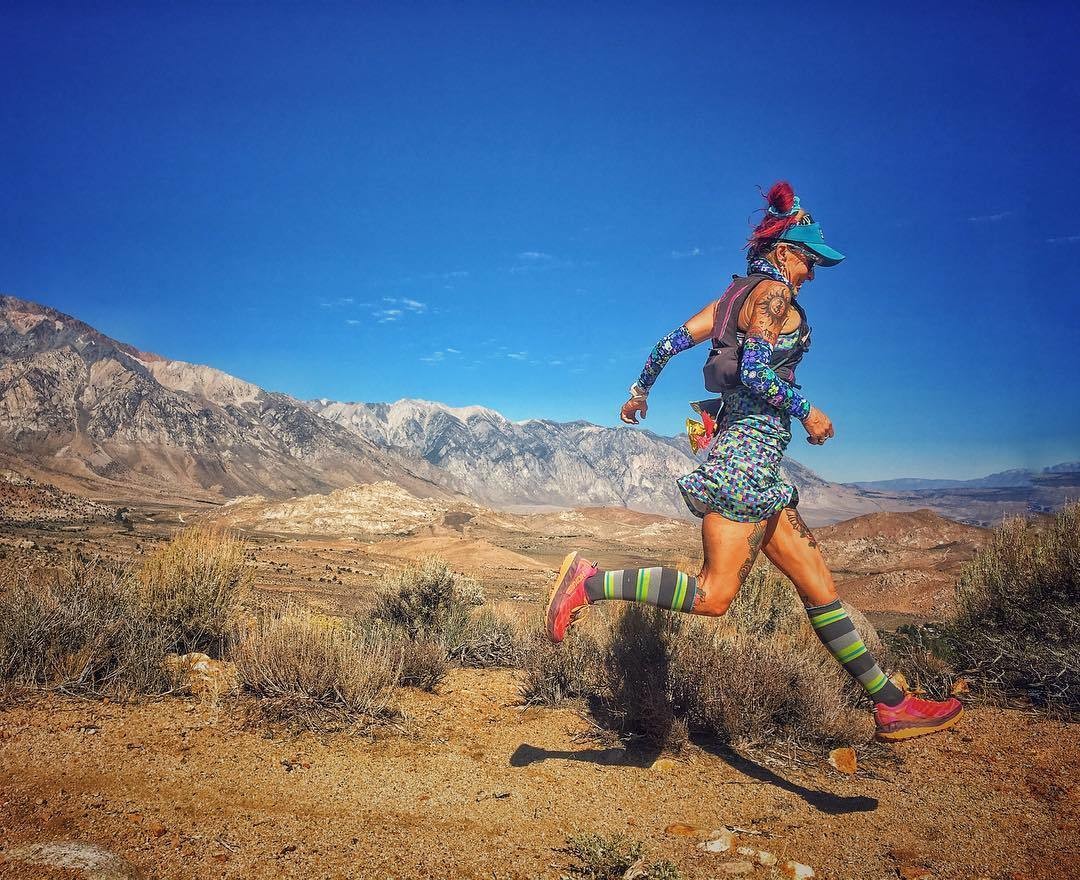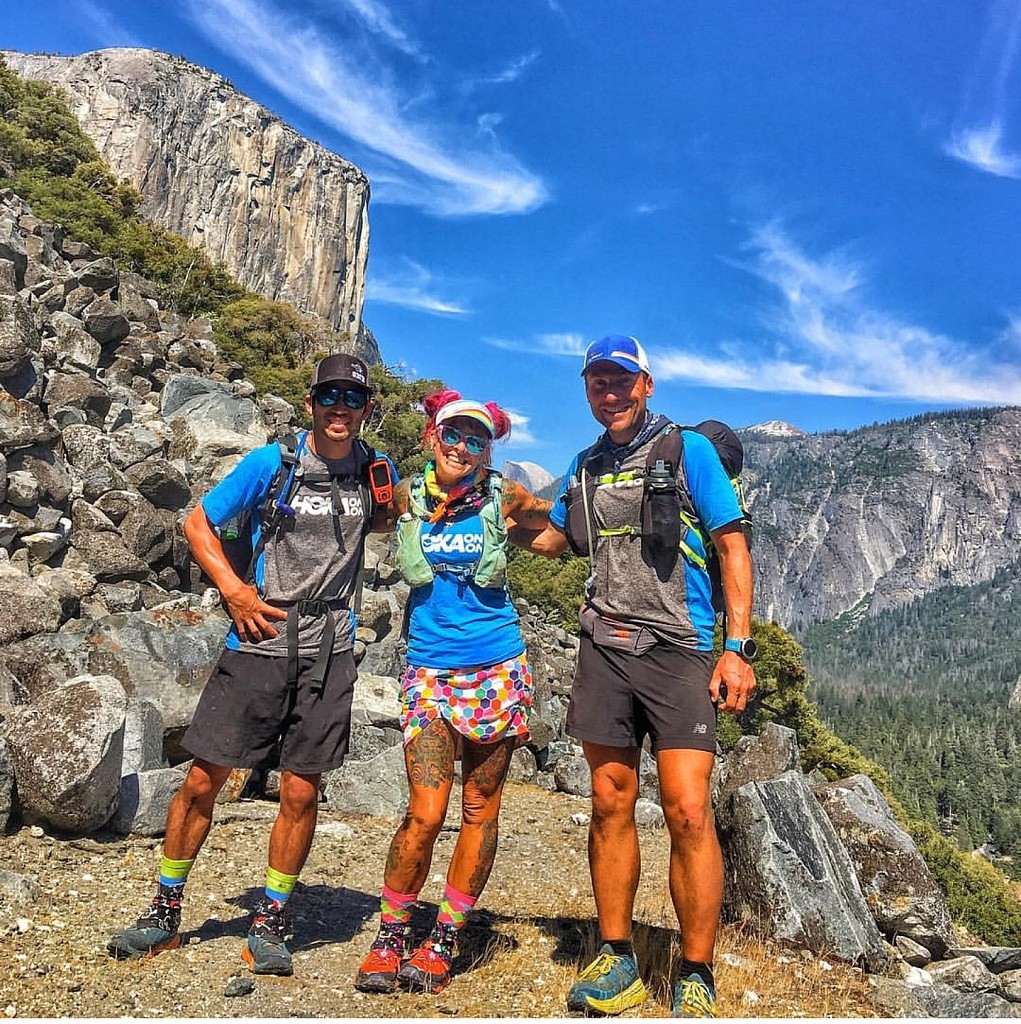Running News Daily
Running News Daily is edited by Bob Anderson. Send your news items to bob@mybestruns.com Advertising opportunities available. Train the Kenyan Way at KATA Kenya and Portugal owned and operated by Bob Anderson. Be sure to catch our movie A Long Run the movie KATA Running Camps and KATA Potato Farms - 31 now open in Kenya! https://kata.ke/
Index to Daily Posts · Sign Up For Updates · Run The World Feed
How ultra running is helping extreme athletes and others in Colorado battle addiction
On an afternoon 25 years ago, Catra Corbett figured her life was over.
She looked in a mirror and saw purple dashes under her bulging, red eyes, a face painted white, black lipstick and a sad, tired expression that wondered when her next hit was coming. She looked like an extra in “Buffy the Vampire Slayer.” She was a go-go dancer who sold drugs and danced all night in clubs. She’d been up three days.
“This sucks,” she thought to herself, but she saw no way to change it.
But it did change, after the cops broke down her door and arrested her. A judge, knowing this was her first offense, made her a deal: If she gave up drugs, he would give her a clean slate. If she didn’t, she would go to jail.
One night in jail scared her enough to give up drugs. She returned to her hometown of Fremont, Calif., away from the club and her friends, and moved in with her mom. She was depressed. She was bored. She wondered if she would stay off drugs. And then she entered a 10K.
Now she is one of the most successful ultrarunners of all time, a woman who completed more than 250 races and ran 100 miles more than 125 times. She is also the most extreme and famous example of the turnaround that extreme sports see in an unusual percentage of its participants.
She is the most visible example, with pink hair, bright, colorful clothes and tattoos all over her body, but there are many others. Corbett once said she believed that 50 percent of all ultrarunners are addicts.
That figure is likely too high, especially with the boom in ultrarunning and the waves of extraordinary athletes and tough-as-nails competitors dominating the sport now, but there are many examples that suggest it is not only a piece of its history, it is still a part of the sport, a part that ultrarunning or other extreme sports don’t care to hide.

Timothy Olson, a recovering addict, won the Western States 100, perhaps the most prestigious ultra, in 2012 and 2013 and once held the course record. Charlie Engle, one of the sports best-known extremists, was a crack addict.
Other extreme endurance sports have attracted addicts as well, such as Lionel Sanders, who signed up for the Ironman triathlon in 2010 to help him beat his addiction to drugs and became a star, finishing second in the Ironman World Championships in 2017. Corbett was clean when she began running, but she said it helped her stay that way.
“It was mostly the running,” she said in an interview. “It gave me a purpose kept me focused.”

Experts saw the potential link between exercise and fighting addiction and are now using it to help addicts battle their cravings, even if they aren’t running 100 miles to do it. Even a 10-minute walk, one expert said, can stifle the need for a fix.
Experts have long searched for solutions to the problem of helping people stay sober when little else seems to work. But more are finding that the solution isn’t frog’s breath or a strange hobby or therapy dog. It’s just a matter of moving.
“It’s not a magic bullet,” said Alex Murphy, behavioral health consultant with North Range Behavioral Health in Greeley who has treated drug addiction. “But there’s a lot of good things that come from it.”
Those good things include dopamine, along with serotonin, which triggers happiness, and norepinephrine, which helps with energy. Those neurotransmitters are released in generous quantities when you work out, especially when you do it outside.
Many drugs trigger the release of dopamine — even a brisk, 10-minute walk can release a bit and help an addict fight cravings.
“Dopamine drives both motivation and pleasure,” Murphy said. “The more we can find healthy releases of that, the better. It won’t provide the same levels that the drug will, but it can give you a higher baseline and squash some of the cravings.”
Corbett said the natural high — many call it the “runner’s high,” even though many longtime runners say it’s a gross exaggeration — was a key to keeping herself off drugs.
by Dan England
Login to leave a comment




